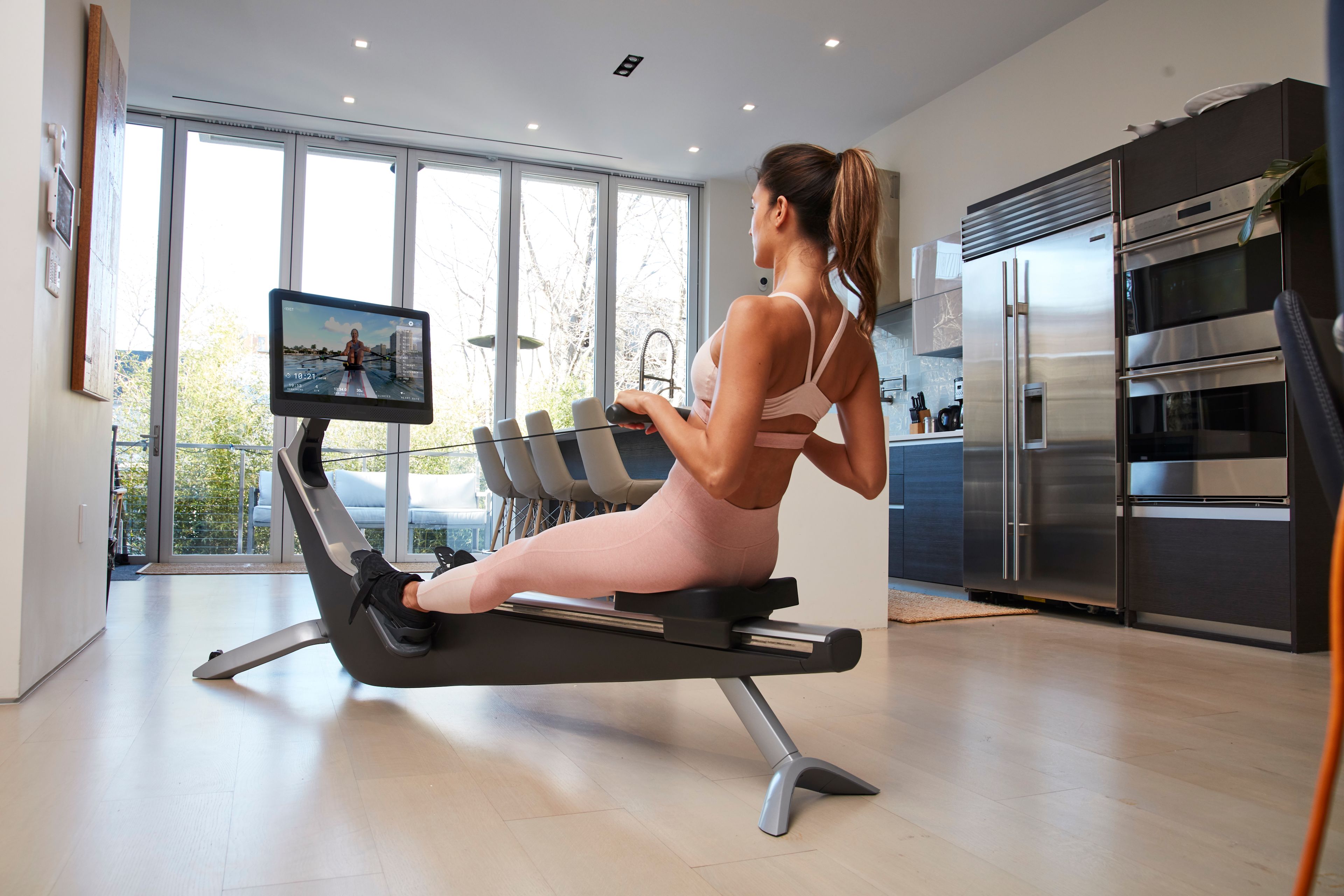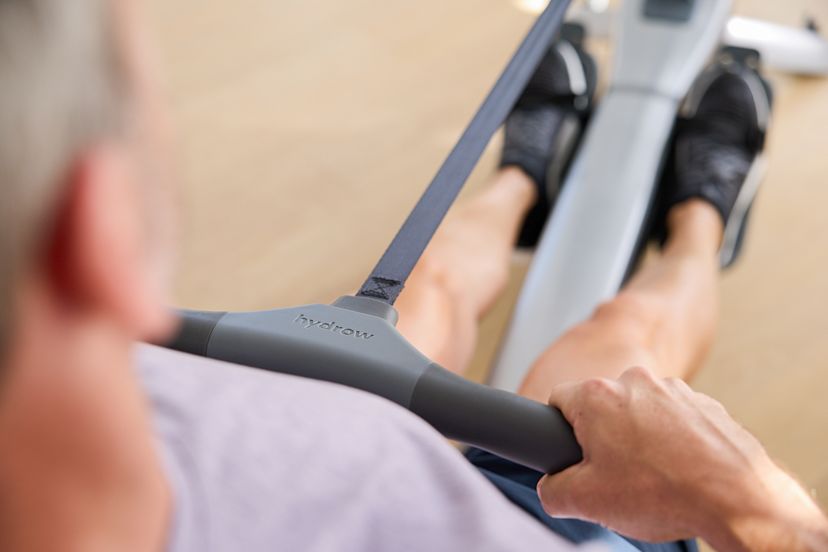Rowing Workouts: how to calculate the right pace windows and meet your goals

What defines a “good” split on a rowing machine? And how much does the rowing split really matter in your rowing workout? As it turns out, the split is really important – but it’s also unique to you and your personal fitness level. In this post, we’ll go over why rowing workout pace matters and how you can use pace windows to improve your own health and fitness.
The rowing split: Why care about it?
In rowing, your split refers to how long it will take you to row 500 meters at your current speed. Split refers to the speed in rowing; the lower your split, the faster you’re going. Split is usually displayed as X:XX/500m on an indoor rowing machine.
There are several ways to improve your split in rowing, and some are better than others. When you want to lower your split, any or all of the following adjustments will do the job.
To lower your rowing split, increase your strokes per minute
If you were to maintain the same amount of effort but squeeze in more strokes per minute, your split will likely improve. Here’s the catch, though: Rowing at a higher rhythm will indeed make you go faster, but it’s not the only way to improve your speed. If more strokes per minute is the only way you can increase your speed, you’ll quickly plateau. That's why rowing workouts pace is important.
As a general rule of thumb, the higher your strokes per minute, the more challenging it becomes to maintain form and effectively press against resistance. At Hydrow, we challenge you to hold and maintain various stroke counts throughout your workouts to develop form and efficiency.
To lower your rowing split, increase power output
In rowing, the power you generate with every stroke is measured in watts. Most indoor rowing machines, including Hydrow, include the option to show watts on the display screen. You don’t need to monitor this number with every single stroke, but it can be helpful to remember that increasing power will usually result in bigger speed gains than simply rowing as quickly as possible.
Most of your power is generated during the drive, the part of the rowing stroke in which you press your feet into the footbeds, straighten your legs, and fire your quads, hamstrings, and glutes to work through resistance.
To lower your rowing split, build up stamina and endurance
If you’re new to rowing, correct form will likely leave you worn out at first! That’s because rowing is a total body workout; the majority of your muscles are being engaged with every stroke. The above suggestions for improving speed are great, but if you struggle to hang on for more than a few minutes, longevity and endurance would be a good focus.
Sometimes we have good intentions about doing a long workout but are rowing a little too fast and don’t realize it until it’s too late. That’s why it’s helpful to know what pace windows are appropriate for you.
What’s the right split for me during my rowing workout?
At Hydrow, we have a workout that helps you calculate what your exact rowing workout pace windows should be for any given workout. It’s called the 5-minute assessment, and you can find it at any time in the Hydrow library by filtering for 5-minute workouts, then filtering for Drive workouts. The assessment will be the only one that shows up.
The 5-minute assessment is a time trial in which you hold a rate of 26 strokes per minute throughout and aim to get as many meters as you can in five minutes. Shortly after you complete this workout, you’ll be sent an email that calculates your recommended pace windows to aim for in the future workouts. At Hydrow, we have five different pace windows: Walk, Jog, Run, Sprint, and Max Effort.
Why rowing at the right intensity matters
Rowing workout pace and interval workouts in general are carefully designed to push you without completely burning you out. If you know your pace windows, you know what numbers you’re aiming to hit in your workout. If you’re just trying to go as fast as possible at all times, you won’t be able to reap the intended benefits of the program.
Often, we tend to take our rest periods too fast and our intervals too slow. Challenge yourself to go for it when it’s time to push, but also challenge yourself to actually rest when it’s time to rest. This up-and-down modulation in heart rate is what makes interval training so effective; if you keep your heart rate through the roof for the entire workout, you’re missing out on this heart-healthy benefit.
How to use pace windows to reach your goals
So how can a rowing workout pace help you improve your fitness and reach your goals? Here are a few of the most popular ways pacing can help you go this distance.
Aim for a negative split
Negative splits are a common best practice in many sports, and you can use them to your advantage in rowing as well. The idea is simple: Go faster in the second half of your workout than in the first half.
For example, if you do a 30-minute Sweat workout that includes six four-minute intervals holding a run pace, you might aim to do the first two intervals a hair slower than your run pace, the next two intervals right at your run pace, and then the last two intervals slightly faster than your run pace. Learning to leave some gas in the tank before you move forward can help you make progress over time.
Use challenges to hold yourself accountable
At Hydrow, our training camps are designed to help you build endurance and strength. You can enroll in a training camp at any time, and when you do so you’ll be prescribed a series of two to four workouts a week to complete over the next several weeks. Use this structure to build up your fitness place and improve your split over time!
Measure your progress regularly
When you row regularly and implement the form cues our Athletes give during workouts, you will get faster and more fit over time. So let’s measure that!
Take the 5-minute assessment on a regular basis – at least once every 90 days – to see where your fitness is at. Again, the assessment has you maintain a stroke count of 26 strokes per minute for the entire session, so you’ll be challenged to use quality form and power to propel yourself forward and set new benchmarks.
-----
Rowing doesn’t have to be a mystery. When you have targets to hit that are customized for your unique fitness level, setting and achieving goals becomes far more motivating. Hydrow gives you everything you need to find your rhythm and have fun along the way; learn more about what we have to offer by clicking here.




